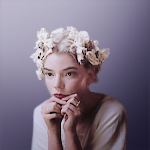CITAZIONE
Anne Boleyn: witch, bitch, temptress, feminist
As a small child I remember being told by a solemn nun that Anne Boleyn had six fingers on one hand. In the nun's eyes, it was the kind of deformity that Protestants were prone to; it was for Anne's sake, as everyone knew, that Henry VIII had broken away from Rome and plunged his entire nation into the darkness of apostasy. If it weren't for this depraved woman, England would be as holy as Ireland, and we'd all eat fish on Friday and come from families of 12.
Anne Boleyn wasn't exactly a Protestant, but she was a reformer, an evangelical; and the sixth finger, which no one saw in her lifetime, was a fragment of black propaganda directed at her daughter, Elizabeth I. In Elizabeth's reign it was the duty of beleaguered papists to demonstrate that the queen's mother had been physically and spiritually deformed. Hence, not just the extra finger but the "wen" on her throat, which supposedly she hid with jewellery: hence the deformed foetus to which she was said to have given birth. There is no evidence that this monster baby ever existed, yet some modern historians and novelists insist on prolonging its poor life, attracted to the most lurid version of events they can devise.
Anne Boleyn is one of the most controversial women in English history; we argue over her, we pity and admire and revile her, we reinvent her in every generation. She takes on the colour of our fantasies and is shaped by our preoccupations: witch, bitch, feminist, sexual temptress, cold opportunist. She is a real woman who has acquired an archetypal status and force, and one who patrols the nightmares of good wives; she is the guilt-free predator, the man-stealer, the woman who sets out her sexual wares and extorts a fantastic price. She is also the mistress who, by marrying her lover, creates a job vacancy. Her rise is glittering, her fall sordid. God pays her out. The dead take revenge on the living. The moral order is reasserted.
Much of what we think we know about Anne melts away on close inspection. We can't say for certain what year she was born, and there are many things we don't understand about how her violent death was contrived. Holbein created incisive portraits of Henry VIII and his courtiers, but there is no reliable contemporary likeness of Anne. The oval face, the golden "B" with the pendant pearls: the familiar image and its many variants are reconstructions, more or less romantic, prettified. The fact that some antique hand has written her name on a portrait does not mean that we are looking at Henry's second queen. Her image, her reputation, her life history is nebulous, a drifting cloud, a mist with certain points of colour and definition. Her eyes, it was said, were "black and beautiful". On her coronation day she walked the length of Westminster Abbey on a cloth of heaven-blue. Twice in her life at least she wore a yellow dress: once at her debut at court in 1521, and again near the end of her life, on the frozen winter's day when, on learning of the death of Henry's first queen, she danced.
When she first appeared at court she was about 21 years old, lithe, ivory-skinned, not a conventional beauty but vital and polished, glowing. Her father Thomas Boleyn was an experienced diplomat, and Anne had spent her teenage years at the French court. Even now, Englishwomen envy the way a Frenchwoman presents herself: that chic self-possession that is so hard to define or imitate. Anne had brought home an alluring strangeness: we imagine her as sleek, knowing, self-controlled. There is no evidence of an immediate attraction between Henry and the new arrival. But if, when she danced in that first masque, she raised her eyes to the king, what did she see? Not the obese, diseased figure of later years, but a man 6' 3" in height, trim-waisted, broad-chested, in his athletic prime: pious, learned, the pattern of courtesy, as accomplished a musician as he was a jouster. She saw all this but above all, she saw a married man.




